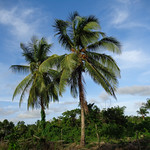
Forests in eastern Siberia and Alaska are prone to widespread fires when warm and dry air masses from lower latitudes enter beneath high-pressure systems, presenting additional indicators for meteorologists to predict boreal blazes, scientists say.
Improved forecasts can help reduce active forest fires and mitigate the effects of climate change, which has boosted air temperatures in high-latitude regions at twice the annual global rate over the past 30 years. Fire forecasting systems can be enhanced by adding two indicators: warm, dry air masses and wind speed at lower levels in the atmosphere.
These are some of the conclusions of a study funded by the Ministry of Agriculture, Forestry and Fisheries of Japan in collaboration with the Center for International Forestry Research (CIFOR) and Khabarovsk Federal Research Center of the Far-Eastern Branch of the Russian Academy of Sciences, the Hokkaido University, Arctic Research Center.
Fire is a natural element of boreal forests – located in the Arctic regions – and plays an essential role in the regeneration of vegetation with an ecosystem. However, forest blazes in eastern Siberia and Alaska have become more frequent and intense in recent years due to climate change, releasing large amounts of carbon and methane from the layers of organic matter beneath the permafrost.
As boreal forest trees – such as larch, pine and spruce – stand on carbon-rich soil that is similar to peat, fires become active during droughts and heat waves. Increased fire activities since the 1990s in Alaska and in the Sakha republic of northeastern Siberia (Russia) suggest that they are an effect of climate change, according to Hiroshi Hayasaka, a researcher at Hokkaido University’s Arctic Research Center in Japan and the study’s lead author.
The paper focused on four regions – Yakutsk, Krasnoyarsk and Khabarovsk in Siberia as well as Fairbanks in Alaska – and selected 13 active fire periods based on the number of hotspots. Boreal forest fires were evaluated using data collected by the MODIS imaging instrument on NASA’s Terra and Aqua satellites from 2002 to 2017.
The scientists found that very active fires occurred when warm and dry air masses from the south were approaching, stagnating and passing each study region. The movements of these masses were mostly related to high-pressure systems in the upper air – above about 18,700 feet (5700 meters) – which is where weather patterns form and then determine warm and dry conditions on the ground.
“Boreal forests are susceptible to the effects of these warm air masses that move from south to north because of the jet stream winds,” Hayasaka says. “This does not occur in tropical areas, where the forests are not exposed to the same phenomenon.”
High-pressure systems in the upper air are favorable to fire activity. They produce warm and dry conditions near the Earth’s surface as a result of the downward flow of dense air due to the forces of gravity.
Movements of warm and dry air masses can be easily monitored in a daily temperature chart, making it possible to forecast active fires a few days in advance, based on the study results.
“It takes several days for warm and dry air masses to reach high latitudes in the Arctic regions.” Hayasaka says. “As a result, we can make a fire forecast based on the normal weather prediction, allowing authorities on the ground to take the appropriate fire prevention measures. More accurate weather forecasts from supercomputers will help to issue fire warnings.”
The strength of winds was also a determining factor in hotspot regions. During the top fire period in southern Sakha, wind velocity in the lower air changed from about 1 meter per second to 8 meters per second, while the number of hotspots increased from around 1,000 to 9,000, the scientists wrote.
However, warm and dry air masses alone are insufficient to cause fire hotspots. Using weather maps for the Sakha region in August 2005, the scientists determined that a high-pressure system must also “stagnate” or persist in the upper air to create the conditions for very active fires.
The northward movement of warm air masses from lower latitudes toward southern Sakha tended to exacerbate fires, accompanied by strong wind conditions.
Although these air masses come from lower latitudes, they are mostly related to the meandering of strong westerly winds. In Sakha, these were driven by stagnant low-pressure systems in western Siberia. In Alaska, the jet stream westerlies originated over the Bering Sea, according to the study.
“These meandering westerlies promote the formation of high-pressure systems and allow the warm, dry air to reach the Arctic regions,” Hayasaka says. “Without these strong wind currents, the threat of forest fires would not be so great in the boreal regions.”
Two of the four study regions – Yakutsk and Fairbanks – were more prone to fires than Krasnoyarsk and Khabarovsk. The difference in fire activity suggests that the fire regimes, including the landscapes, should be studied in future, according to the scientists.
We want you to share Forests News content, which is licensed under Creative Commons Attribution-NonCommercial-ShareAlike 4.0 International (CC BY-NC-SA 4.0). This means you are free to redistribute our material for non-commercial purposes. All we ask is that you give Forests News appropriate credit and link to the original Forests News content, indicate if changes were made, and distribute your contributions under the same Creative Commons license. You must notify Forests News if you repost, reprint or reuse our materials by contacting forestsnews@cifor-icraf.org.












